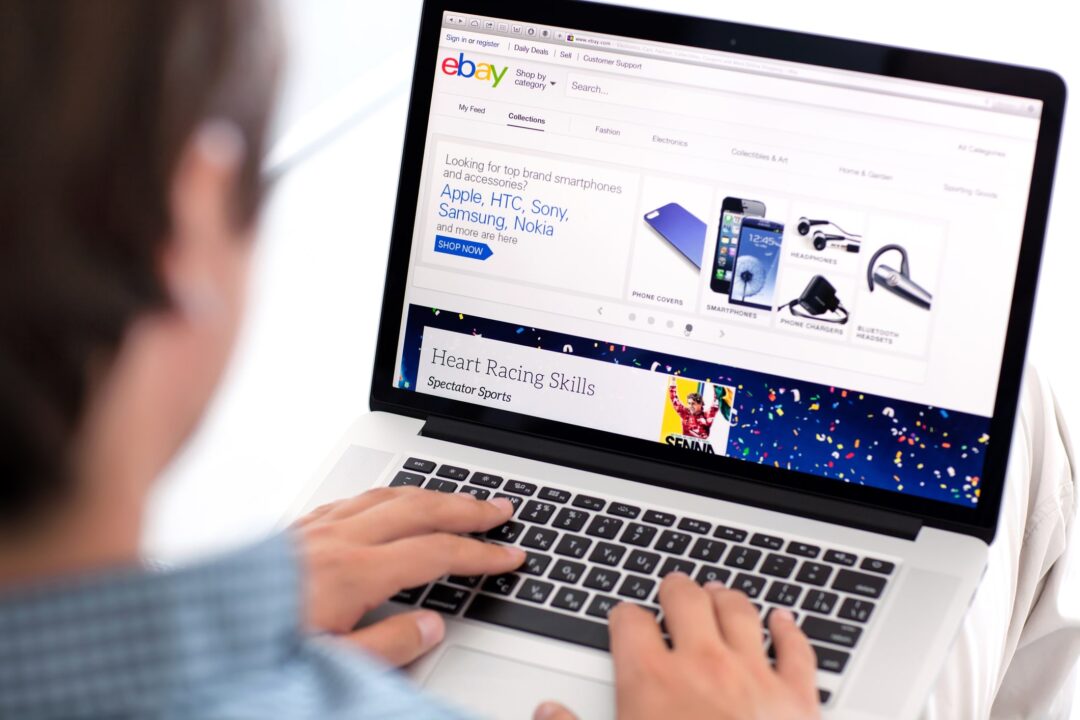Language:
The Different Types of Ecommerce Businesses

Ecommerce is booming, and it’s no surprise why. Selling online gives businesses access to a global audience, lower operational costs, and endless growth opportunities. But not all ecommerce businesses are created to offer the same benefits.
Whether you’re a small startup or an established brand, choosing the right model impacts the success of your ecommerce store or business.
Let’s break down the different types of ecommerce businesses, their benefits, and how to pick the one that works for you.
And while we’re at it, if you already know which ecommerce business type you’re going to start, doola is here to help you with the business formation and compliance!
The Different Types of Ecommerce Businesses
Ecommerce models are based on who’s buying and who’s selling.
Here are the primary types of ecommerce businesses, explained clearly to help you decide which fits your business goals.
Direct-to-Consumer (DTC) Ecommerce

What is DTC Ecommerce?
DTC ecommerce is when businesses sell their products directly to consumers without middlemen like wholesalers or retailers. This allows businesses to control every aspect of the customer journey—from marketing to delivery.
Benefits of the DTC Model
- Brand Control: Businesses can establish a strong brand identity by managing the entire customer experience.
- Higher Profit Margins: By cutting out intermediaries, you retain more revenue.
- Customer Insights: Direct interaction with customers allows businesses to gather valuable feedback and data to refine products and strategies.
Examples of Successful DTC Businesses
- Glossier: Focuses on customer-centric beauty products.
- Warby Parker: Changed the eyewear game with affordable, stylish glasses.
- Casper: A leader in DTC mattress sales with innovative online marketing.
Business-to-Business (B2B) Ecommerce
What is B2B Ecommerce?
In B2B ecommerce, businesses sell products or services to other businesses. These transactions often involve bulk orders, specialized items, or recurring contracts, making B2B ecommerce more structured and relationship-focused.
Benefits of the B2B Model.
- High-Value Transactions: Bulk orders lead to larger sales volumes and revenues.
- Long-Term Relationships: B2B models often involve contracts or repeat business, creating stability.
Challenges of B2B Ecommerce
- Complex Sales Process: Deals often require negotiations and custom pricing.
- Lengthy Sales Cycle: Transactions may take weeks or months to close.
Examples of Industries and Companies Thriving With B2B Ecommerce.
- Alibaba: A marketplace connecting manufacturers with businesses worldwide.
- Grainger: Supplies industrial and safety equipment to other businesses.
- Salesforce: Provides CRM software to companies to manage customer relationships.
Business-to-Consumer (B2C) Ecommerce
How B2C Ecommerce Works
B2C ecommerce involves businesses selling directly to individual consumers. This is the most familiar ecommerce model, encompassing online shopping experiences like buying clothes, electronics, or groceries.
Key Differences Between B2C and DTC
- Third-Party Platforms: Many B2C businesses sell on platforms like Shopify, while DTC brands often rely on their own websites.
- Scale: B2C models often target a broader audience compared to DTC’s more niche approach.
Popular Examples of B2C Platforms and Brands
- Amazon: A global leader in online retail.
- Zappos: Known for its seamless shoe and clothing shopping experience.
- Walmart: Combines physical stores with a strong online presence.
Consumer-to-Business (C2B) Ecommerce

What is C2B Ecommerce?
C2B ecommerce flips the traditional model—individuals sell products or services to businesses. This includes freelancers, influencers, and platforms where individuals offer their skills to companies.
Real-Life Examples of C2B Ecommerce
- Fiverr: Freelancers offer services to businesses, from graphic design to writing.
- Influencers: Creators who sell sponsored posts or reviews to brands.
- User Testing Platforms: Businesses pay individuals to test their products or websites.
Advantages of C2B
- Flexibility: Individuals can set their own schedules and terms.
- Global Reach: Digital platforms connect sellers with businesses worldwide.
Consumer-to-Consumer (C2C) Ecommerce

What is C2C Ecommerce?
C2C ecommerce allows individuals to sell products or services directly to other individuals through platforms that facilitate these business transactions.
Leading Platforms in the C2C Space
- eBay: A pioneer in online auctions and resale.
- Facebook Marketplace: A casual platform for local buying and selling.
- Poshmark: A platform for reselling fashion and accessories.
Pros of the C2C Model
- Low startup costs for sellers.
- Buyers enjoy access to unique and second-hand products.
Cons of the C2C Model
- Trust issues between buyers and sellers.
- Platforms may charge transaction fees.
Subscription-Based Ecommerce

The subscription-based ecommerce model involves recurring payments in exchange for products or services. Subscription businesses are booming because they offer convenience for customers and predictable revenue for businesses.
Examples of Subscription-Based Businesses
- Netflix: A household name in streaming entertainment.
- Blue Apron: Delivers meal kits to your doorstep.
- Canva Pro: A subscription-based graphic design tool.
Why Subscription Models Are Growing
- Customers enjoy convenience and consistent delivery of value.
- Businesses benefit from steady, recurring revenue.
Marketplace Ecommerce
What is a Marketplace Model?
Marketplaces are platforms where multiple sellers and buyers interact. They act as intermediaries, allowing sellers to list their products while buyers browse and purchase.
Examples of Successful Marketplaces
- Amazon: The ultimate marketplace for everything.
- Etsy: Focuses on handmade and vintage goods.
- Airbnb: A marketplace for accommodations.
Benefits of the Marketplaces
- Wide variety of products attracts more buyers.
- Sellers can reach a larger audience without building their own platform.
Challenges of the Marketplaces
- High competition among sellers.
- Dependence on the marketplace’s policies.
Hybrid Ecommerce Models
What is a Hybrid Ecommerce Model?
Hybrid models combine two or more ecommerce approaches. For example, a company may sell directly to consumers (DTC) while also maintaining a presence on marketplaces like Amazon.
Examples of Hybrid Models
- Apple: Sells directly to consumers and via retail partners.
- Nike: Operates a DTC model but also uses marketplaces like Zalando.
Why Hybrid Models Work
They offer flexibility and maximize revenue opportunities by combining the strengths of multiple approaches.
Choosing the Right Ecommerce Model

Selecting the right ecommerce model is one of the most critical decisions you’ll make when starting your online business. Each type of ecommerce business has its unique strengths and challenges, and the best choice depends on several key factors.
Here are the most important considerations to help you decide:
1. Your Target Audience
Who are you selling to? Understanding your ideal customer is crucial:
✅ B2C: Perfect if you’re selling products directly to consumers, especially everyday goods or lifestyle items.
✅ B2B: Ideal if your audience is other businesses, like wholesalers or service providers.
✅ DTC: Best if you want to build a strong brand presence and control the entire customer experience.
✅ C2C: Suited for platforms enabling individual-to-individual transactions, such as reselling or second-hand items.
2. Type of Product or Service
What are you offering? Your product or service often determines your model:
✅ Subscription-Based: Great for consumables or services people need repeatedly, like meal kits or SaaS tools.
✅ Marketplace: Ideal if you’re selling a wide variety of items or want to act as a platform for other sellers.
✅ Hybrid Models: Best if you offer multiple types of products or services and need flexibility in sales channels.
3. Budget and Resources
Some models are more resource-intensive than others:
✅ DTC or B2C: Requires upfront investment in branding, marketing, and inventory.
✅ Marketplace: Involves platform development or fees to list your products on established marketplaces.
✅ C2C: Low startup cost but requires effort to build trust among users.
✅ Subscription-Based: May require ongoing investment in logistics and personalized customer experiences.
4. Scalability
Think about how easily the model can grow as your business expands:
✅ B2B: Offers long-term contracts and recurring orders, making it scalable with a stable customer base.
✅ Marketplace: Highly scalable but requires robust technology to handle a growing number of sellers and buyers.
✅ Subscription-Based: Easily scalable with predictable recurring revenue streams.
4. Legal and Tax Considerations
Different models come with unique regulatory requirements. So take your decision accordingly.
✅ B2B and Marketplace Models: May involve complex tax rules and compliance for multiple regions.
✅ DTC and B2C: Require consumer data protection and shipping regulations to be in place.
Let doola Help You Make the Right Choice

Starting an ecommerce business goes beyond just picking the right model—it’s about laying a strong foundation for success.
That’s where doola steps in. Whether it’s forming your LLC or managing compliance, we handle all the grind so you can dedicate all your time in scaling your business.
Ready to launch your dream business? Book a free consultation with doola today!



